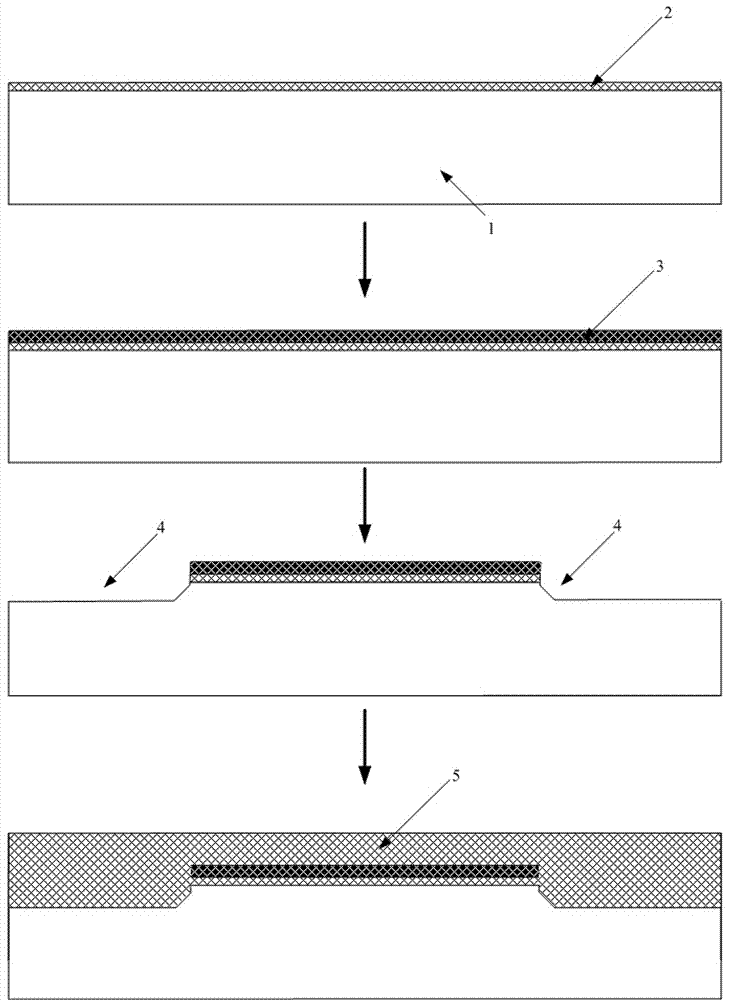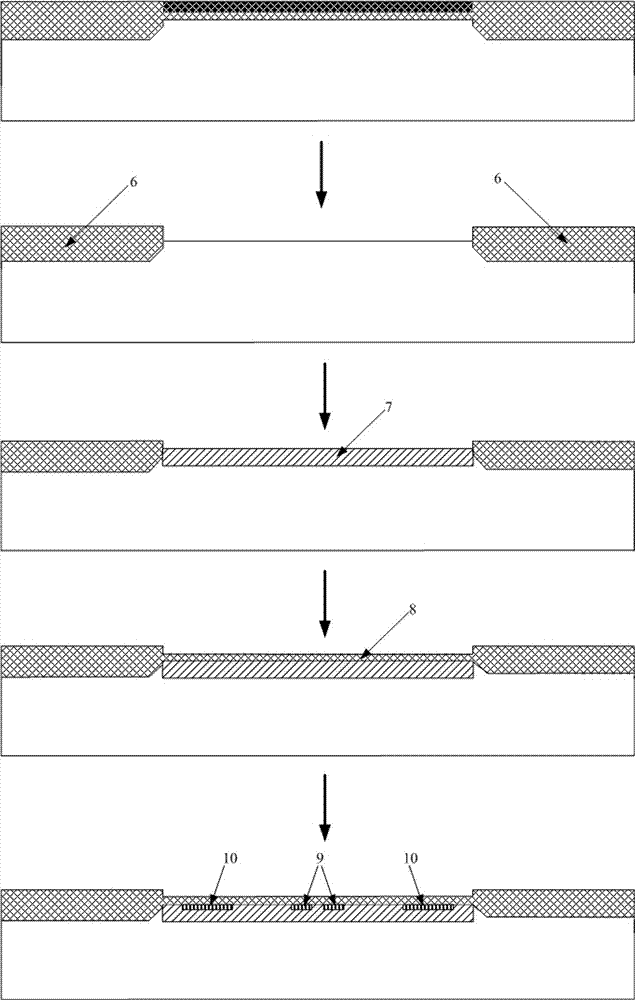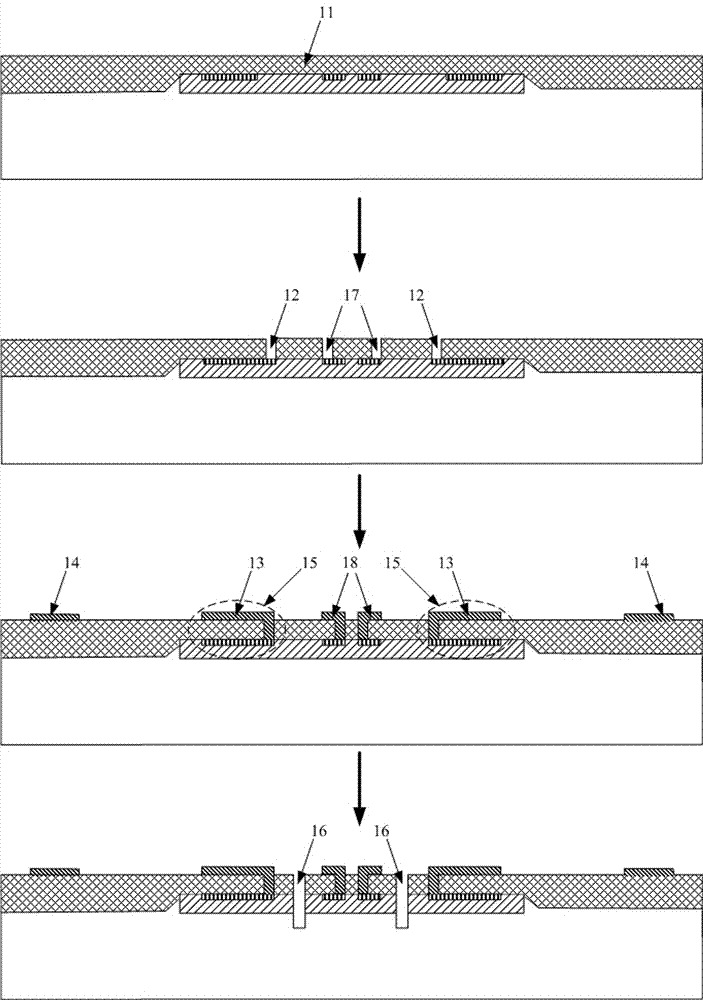Hot air speed and air direction sensor based on thinning process and manufacturing method thereof
A wind speed, direction and sensor technology, which is applied in the manufacture of semiconductor/solid-state devices, the use of thermal variables to measure fluid velocity, instruments, etc. It can solve the problems of high power consumption, silicon wafer pollution and damage of the sensor system, and reduce the effect of lateral heat conduction. , the effect of isolating lateral heat conduction and reducing heat capacity
- Summary
- Abstract
- Description
- Claims
- Application Information
AI Technical Summary
Problems solved by technology
Method used
Image
Examples
Embodiment 1
[0047] A preparation method of a thermal wind speed and direction sensor based on a thinning process is as follows:
[0048] The first step, the preparation of the silicon chip
[0049] Step 1, thermally growing a first thermal oxide layer 2 on the surface of the silicon chip 1;
[0050] Step 2, chemical vapor deposition of a silicon nitride layer 3 on the first thermal oxide layer 2;
[0051] Step 3, using RIE technology to etch the silicon chip 1 to define the active region 4;
[0052] Step 4, chemical vapor deposition of the second oxide layer 5;
[0053] Step 5, using CMP technology to polish the silicon chip 1;
[0054] Step 6, removing the silicon nitride layer 3 by wet etching, and preparing the field oxide layer 6;
[0055] Step 7, phosphorus ion implantation, preparing N well 7;
[0056] Step 8, thermally growing the gate oxide layer 8;
[0057] Step 9, boron ion implantation, preparing the heating element 9 and one end 10 of the heat sensing temperature measuri...
Embodiment 2
[0073] A thermal wind speed and direction sensor based on a thinning process is characterized in that it includes a thinned silicon chip 21, the back side of the thinned silicon chip 21 is connected with a ceramic substrate 23 through a thermally conductive glue 22, and the thinned silicon chip 21 is connected to a ceramic substrate 23. An N well 7 is provided on the front, an oxide layer 11 is provided on the N well 7, and 4 diffused resistance heating elements 9 and 4 heat sensing temperature measuring elements 15 are arranged in the middle of the N well 7. The temperature element 15 is a thermocouple temperature measuring element and is distributed around the four diffused resistance heating elements 9, and an electric lead-out pad 14 is provided on the edge area of the oxide layer 11, and the electric lead-out pad 18 of the four diffused resistance heating elements 9 and the electric lead-out pads 13 of the four heat-sensing temperature-measuring elements 15 are respectiv...
PUM
 Login to View More
Login to View More Abstract
Description
Claims
Application Information
 Login to View More
Login to View More - R&D
- Intellectual Property
- Life Sciences
- Materials
- Tech Scout
- Unparalleled Data Quality
- Higher Quality Content
- 60% Fewer Hallucinations
Browse by: Latest US Patents, China's latest patents, Technical Efficacy Thesaurus, Application Domain, Technology Topic, Popular Technical Reports.
© 2025 PatSnap. All rights reserved.Legal|Privacy policy|Modern Slavery Act Transparency Statement|Sitemap|About US| Contact US: help@patsnap.com



